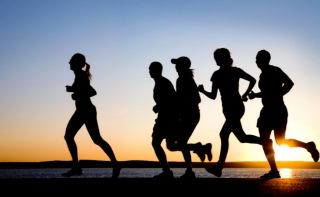Mating
Heart-Inducing Activities Lead to Enhanced Attraction
Will exercise and other forms of arousal make us fall for people?
Posted November 28, 2014

Despite universal notions, at the end of the day, attraction remains an idiosyncratic experience. Often, this works to a romantic’s benefit—you need only people-watch in the Big Apple to validate the “there’s somebody for everyone” saying.
When it comes to attraction, our body’s responses are often the most trustworthy measures. It doesn’t matter if your blind date is smart, successful, good-looking, and charming—if you don’t feel it in your bones, it ain’t a match. However, it's also possible that our bodies are not always a reliable gauge of whether we are truly interested in someone.
In Robert Sternberg's triangular theory of love, passion is what sets the stage. This idea is characterized by two factors: First, other people can cause our heart rates to increase. And second, it’s our racing pulses that induce physiological arousal. If our beating hearts are indeed due to the presence of a new love, our attraction to that person is thus warranted.
However, in the event that something else is to blame for our vibrating hearts, we may be experiencing a phenomenon known in psychology as the "misattribution of arousal." This process usually occurs when we undertake activities that rapidly increase our heart rates, like running fast, skydiving, or even watching a scary movie. When in the presence of someone we find attractive, we may mistake our racing pulses for indicators that we are interested in this person. In other words, we’re misplacing the source of our attraction and our bodies are talking out of turn.
To test this theory, social psychologists Dutton and Aron (1974) created two distinct situations. In a condition generated to induce arousal, men were asked to walk alone across a shaky suspension bridge hundreds of feet above boulders. In the second scenario, men breathed easily as they strolled across a stable bridge placed just a few feet off the ground. In both circumstances, walkers were approached by an attractive female researcher who showed them an ambiguous picture and asked them to interpret the image and create a story about its significance. Subsequently, the attractive researcher handed participants her digits and invited them to give her a ring if they needed to follow up.
The results indicated that men who walked across the precarious bridge reported higher levels of sexual content in their stories. Furthermore, these men were more inclined to call the hot research assistant. Although the men who walked across the safer bridge encountered the very same woman, they not only included less, if any, sexual imagery in their stories, but were also less likely to phone the woman. Evidently, the adrenaline bridge intensified feelings of arousal.
With this in mind, it should have come as no surprise to me when I frequented a different bridge for some heart-inducing exercise—a run—and instead found myself focused on everyone’s bodies but my own. After completing the seven-mile trek, it struck me that I had probably never been attracted to so many people in so little time. As my heart calmed and the sun shone brighter, I realized that perhaps I had been seeing things with adrenaline goggles. Now that I had slowed, the hottie in the hoodie seemed shorter than at first glance. And I could have sworn the guy on the light-up rollerblades had been on a hip bike.
Alas, perhaps it wasn’t “real” attraction after all. There were other factors at play. However, even if my beating heart wasn’t due to the surplus of men around me but instead to my long run, maybe this was okay. What if participating in more fear-inducing activities actually made us take more risks and fall for people not initially on our radars?
At the end of the day, it might be difficult for psychologists and laypeople alike to isolate the true source of attraction. But even if initial attraction is misattributed, perhaps it can evolve into real attraction. And since greater potential for love can be found via heart-pounding activities, I’ll see you on the tallest bridge in the city.


